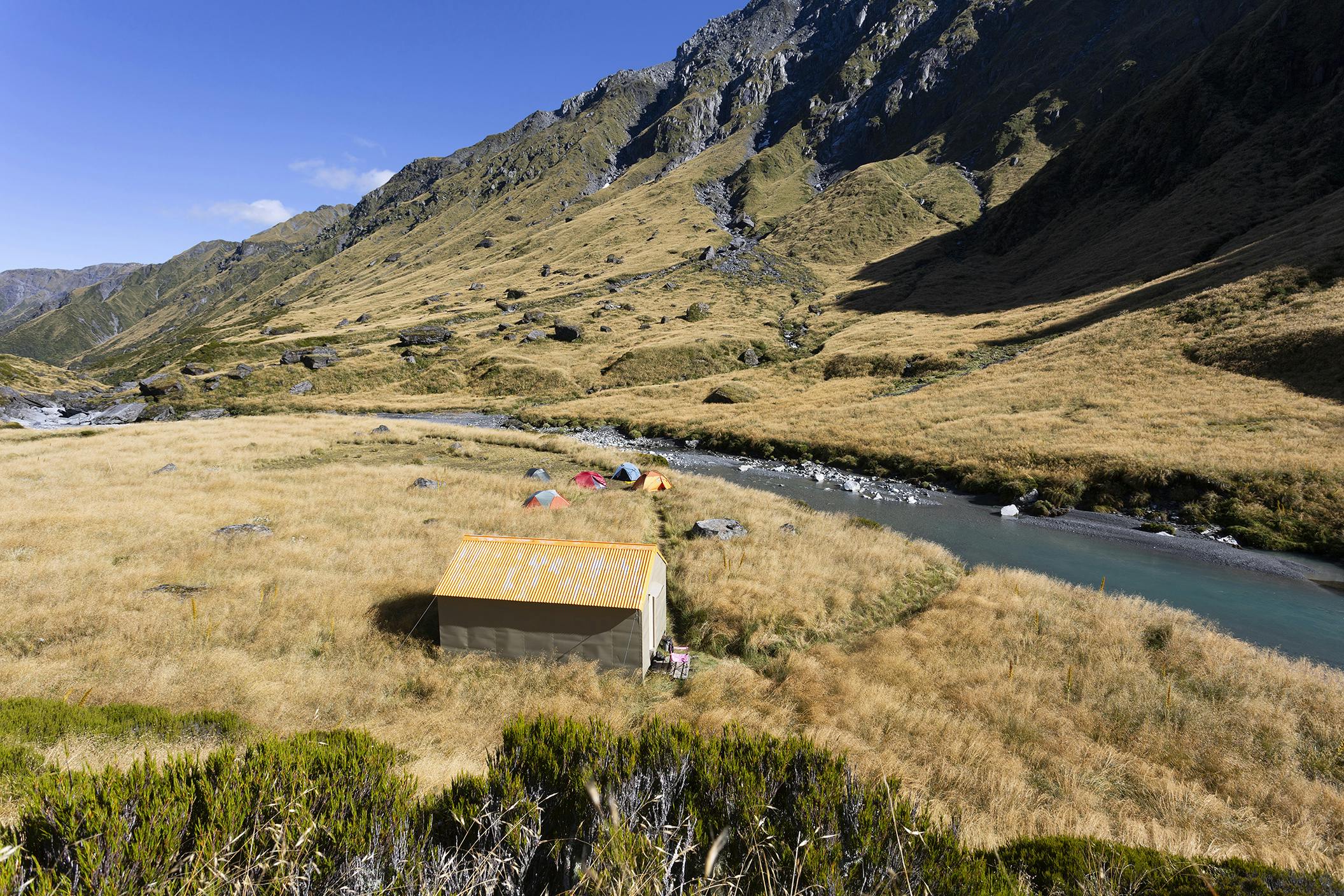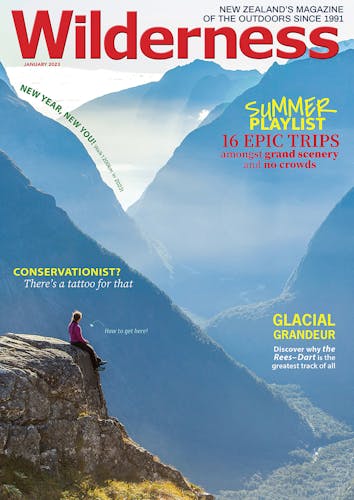Top Waitaha Hut, Westland
There’s nothing here. No fire. No stove. No toilet. No water supply. No cellphone coverage. No annoying text message alerts. No rush-hour traffic.
Just the wind whispering through tawny river flats. Below the hut, a family of whio glide in the glacial green waters. High above, kea nest on a rocky buttress. Burrowing through hidden passages in the tussock, resident weka search for scraps. And us, a bunch of trampers in search of solitude and adventure.
To reach these headwaters requires following an uncompromising route through three claustrophobic gorges: the Morgan, the Waitaha and the Windhover. Between these sections of heinous scrub-bashing, the river can be followed by clambering over boulders the size of buses. Add fickle weather to this mixture for over the hill, the Whitcombe Valley is the wettest place in New Zealand.
These hard-to-reach hideaways are gold to serious hut baggers. Top Waitaha was the first hut built in the region, in 1968 on a grassy terrace. Altitude: 1059m. The iconic hut at Ivory Lake, built in 1970, is only 2–3hr up-valley, requiring some river travel, sidling through tussock terraces and a steep climb up a gravelly spur – an epic day trip.
Jan Wright, NZ Parliamentary Commissioner for the Environment, explains that only one per cent of the world’s rivers remain in a wild, unmodified state. “Rivers that flow all the way unimpeded from the mountains to the sea are becoming rare. The spiritual significance of a river rests in the river as a whole.” The Waitaha is one. In recent years, Morgan Gorge was under threat from hydro power development, and a local helicopter company currently offers scenic tours up the valley to view Ivory Lake, which causes noise pollution.
A patron of this region, Warren Chinn dreams that the central Southern Alps could be better protected within a new national park. Way back in 1892, explorer Charlie Douglas described the valley: ‘For grand scenery and difficulty getting to see it, this river very nearly holds first place in Westland.’








